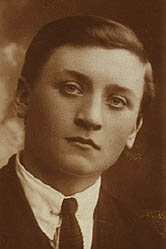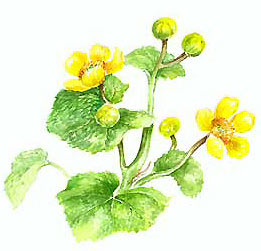|
The Life and Times of John Murdoch Henderson
Part I - A Buchan Farmer's Son
|
Prolific composer, musician and avid collector of music,
John Murdoch Henderson was born on 31st March, 1902, at Nether
Oldwhat, a small farm by New Deer, Aberdeenshire. The second
son of farmer Charles Henderson and Mary Jane Murdoch, he
grew up in the heart of Buchan's farmland with his older brother,
Charles and younger sisters Mary Helen, Esther and Jeannie.
After attending the local village school at Oldwhat, he became
"Dux" (a Scottish senior school's most successful
scholar) at New Deer Secondary School, an achievement which
he later repeated at Peterhead Academy. Earning a place at
the University of Aberdeen, Henderson studied both the arts
and sciences graduating MA in 1926.
As a teacher of general sciences, he took his first professional
post at the Frederick Street School in Aberdeen before moving
on to Ruthieston School where he taught mathematics and the
sciences.
From an early age Henderson took a lively interest in the
musical culture of his native land, the fiddle tunes and songs
of Buchan. He also had a deep passion for the countryside
around his home and grew to become an accomplished botanist
and ornithologist. He wrote articles on the subject for numerous
publications including "The Scottish Naturalist."
|
 A
young JMH.
A
young JMH.
|

Nether Oldwhat (pronounced locally "Al-Fat"), October
2001
Henderson's niece, Gladys, remembers her uncle John as "a
typically canny Buchan lad" who regularly cycled the 35 miles
from Aberdeen to his family home at Oldwhat where he liked nothing
better than a farmhouse dinner of "chappit kale and oatcakes"
or "skirlie and tatties."
 Marsh
Marigolds - Caltha palustris
Marsh
Marigolds - Caltha palustris
Henderson's boyhood interest in wild flowers and wildlife
led to a life long study of botany and natural history. |
She recalls the many times John took his nieces
and nephews on long countryside walks, explaining many of
natures mysteries and teaching them the names of the local
wild flowers and plants - coltsfoot, speedwell, marsh marigolds
and the many more that grew by their Buchan home. It gave
the youngsters a greater understanding of their surroundings
and in so doing, helped them all to develop a deep respect
for the natural world.
|
During his student days in Aberdeen, Henderson suffered
a very close call when he fell from the cliff tops of Nigg Bay as
he searched for botanical specimens. After a long struggle the Coastguard
managed to get him safely back to the cliff tops, using a chair
lift and with help from a number of people who had gathered around
the incident. He was taken to hospital in a very serious condition
and his recovery was to prove to be a slow and painful one. He spent
several months in convalescence at his family home during which
time he made regular excursions to the nearby Broch Dam where he
enjoyed fishing and observing the wild life.
The Press and Journal reported the "Accident
at Nigg Bay" in 1925.
The Last of the Buchan Ospreys
In July 1953, "The Scottish Naturalist" published
an essay by Henderson. "The Osprey In The North East"
gave an account of the ospreys that fished Loch Riach, the Broch
Dam at Bonnykelly, a half mile from his home. He first saw an osprey
at the Dam in the summer of 1925 and wrote of how much he enjoyed
the spectacle of the birds' pounce and plunge as they took fish
from the waters of the loch. The article sadly concludes that the
last of the Bonnykelly Ospreys was fatally wounded by gunshot in
the summer of 1929.
Go to article
Henderson died in Aberdeen, in November 1972. The following tribute
from William Hardy, a friend and fellow fiddle player, was published
in the Press and Journal newspaper a few days later:
|
Press & Journal, November 11th 1972
Friend's last tribute to N.E.'s
"Man of Music"
.
. . . We have received the following tribute in connection
with the death of retired Aberdeen teacher Mr. John Murdoch
, Henderson. .(70)
. of . 15, Craigton Rd
from Mr William Hardie of. 350,
Holborn Street Aberdeen, a close friend.
With
the sudden death of Mr John Murdoch Henderson a week past
Friday, Aberdeen not only lost an ex-school teacher of maths
and science, but the North East and indeed the whole of Scotland,
surely lost its most gifted and brilliant composer since the
late J. Scott Skinner, in the field of our national instrumental
music.
|
Besides
being a composer of such distinction in his own right, he also
dedicated a great part of his life to research and rescue from
oblivion of Scots music traditional, and from the earliest composers
onwards. In this prodigious task he inevitably built up an enormous
collection. He early became an ardent admirer of James Scott
Skinner, George T. Taylor and James F. Dickie, the New Deer
violinist who, at the height of his powers, was a player of
truly exceptional ability, style and taste. After Scott Skinner's
death in 1927, Murdoch Henderson became the secretary of the
J. Scott Skinner Memorial Committee and was very active as conductor,
etc., in fund-raising concerts which culminated in the fine
memorial erected at Allenvale Cemetery in 1931. He was also
responsible for the inclusion of J. Scott Skinner among the
"greats" in Grove's Dictionary of Music.
|
For
some time before World War II, Murdoch Henderson, due to his
undoubted eminence as the authority on strathspey and reel
violin playing was in demand as adjudicator at competitions.
During his years as organiser of the Scots Instrumental Section
of the Aberdeen and North East Music Festival, this section
enjoyed great popularity.
The J. Murdoch Henderson trophies donated by him are a lasting
reminder of this period of his participation in
the musical life of the North East.
He published "Flowers of Scottish Melody" in 1935
and "The Scottish Music Maker" in 1957, besides
some sheet music in the intervening years. Latterly he had
been occupied in preparing further works for publication.
A
keen nature-lover, he enjoyed bird-watching, botany and gardening.
By
kind permission of the
Press and Journal, 2001
|
Henderson the Musician
A Grand Evening Concert
|



